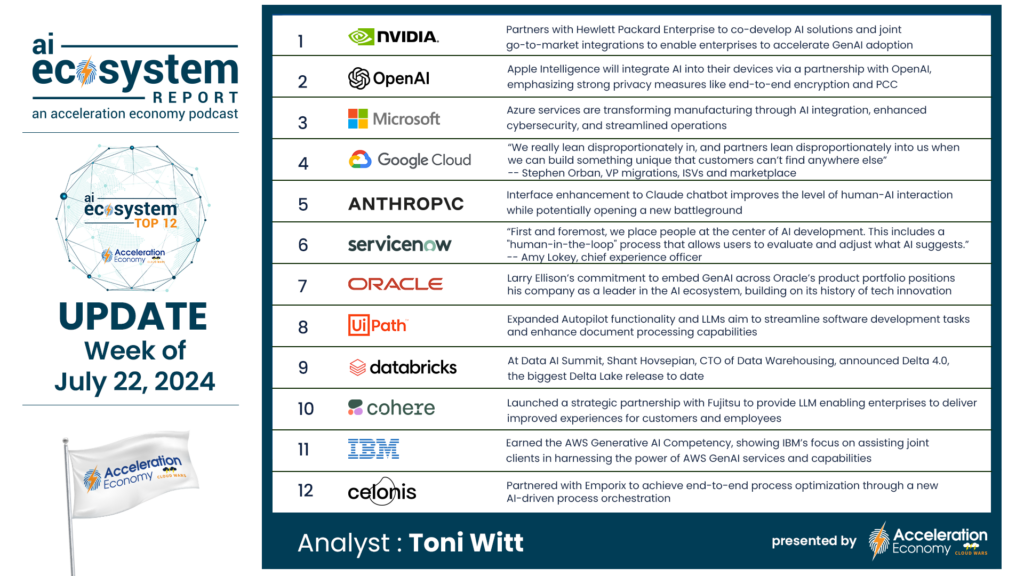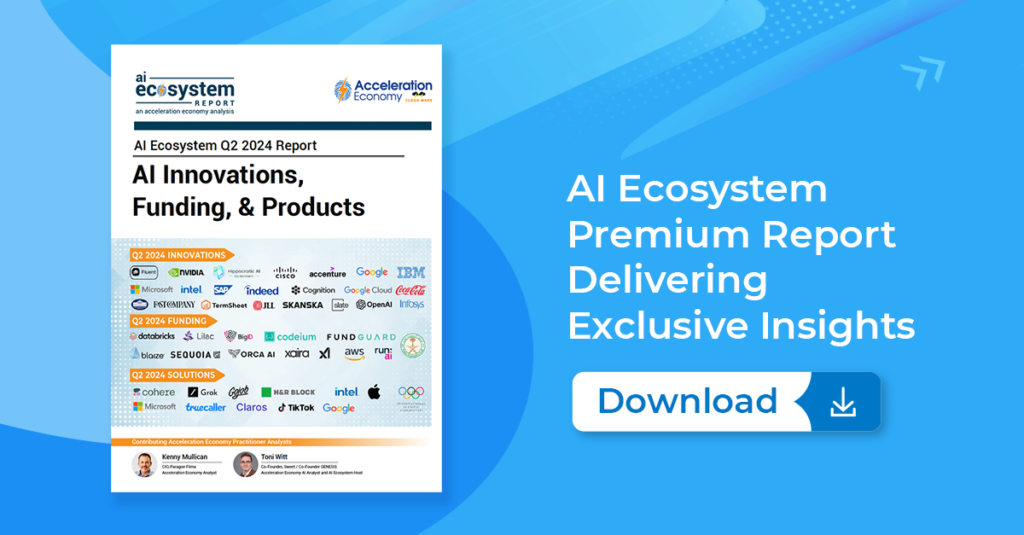Welcome to the AI Ecosystem Report, featuring practitioner analyst and entrepreneur Toni Witt. This series is intended to deliver the timely intelligence about artificial intelligence (AI) you need to get up to speed for an upcoming client engagement or board meeting.

Highlights
Innovation (00:36)

Anthropic announced an initiative to create new evaluation benchmarks for AI models. It’s going to evaluate its own models, like Claude, as well as third-party models from other companies. There are several ways to evaluate and benchmark a model’s performance. However, many current methods don’t fully represent the needs of their end users; there are many inconsistencies with measuring benchmarks.
With these limitations, Anthropic is investing in the development of a new set of benchmarks, funding projects, and external teams that can submit proposals to the company. It also hired someone to manage this funding pipeline full-time. The company is interested in benchmarks that evaluate models in more holistic and impact-oriented ways, rather than just technical proficiency.
Funding (03:25)

An AI-driven outfit styling platform, FindMine, has raised a $9 million series A funding round. The startup’s customers are typically larger fashion brands that sell via online channels. Its features enable users to auto-generate assets for their website, optimize email templates, and drive intelligent decision-making through machine learning, which can be applied to online clothing sales environments. It also provides recommendations for the end customer browsing the site.
FindMine is focused on fashion, specifically fashion that’s sold online. It has been involved in LVMH’s startup program and has strong ties to the European fashion scene. Bigger fashion houses may not have the in-house technical ability, budget, or agility to execute what FindMine offers. Its platform enhances the customer experience, going beyond basic e-commerce.
Solution of the Week (06:12)

Social media platforms have been pushing more and more AI-generated content. For instance, in May, Meta had an experiment tagging images that it thought were generated by AI with a label. This endured massive backlash from creators and photographers, with their work being falsely labeled. Meta shifted to change its policy to include a neutral AI information label so those using the platform were aware of AI-generated content, not necessarily labeling the content to be from AI.
YouTube has had similar concerns. Last November, it announced that its responsible AI agenda has been slowly implementing changes to the platform. While allowing users to leverage GenAI from a creator standpoint, it also protects viewers from synthetic content. YouTube updated its policy to allow viewers to request a takedown of content if they suspect it was AI-generated. The company then checks the flags and decides whether to take it down.

The AI Ecosystem Q2 2024 Report compiles the innovations, funding, and products highlighted in AI Ecosystem Reports from the second quarter of 2024. Download now for perspectives on the companies, innovations, and solutions shaping the future of AI.











